The ICNC2014 Scientific Program Committee is delighted to announce the Plenary Speakers for the ICNC2014 to held at Iguazu Falls, Brasil from May 4-9, 2014. All world leaders in their field and engaging speakers, the plenary lecturers will be addressing a range of emerging and cross-cutting topics in pediatric neurology.
The
Prof. Arnold Munnich Institut National de la Santé et de la Recherche Médicale (INSERM)
Professor Arnold Munnich Since 1980, Professor Arnold Munnich has made every efforts to conciliate the clinical and molecular approaches of genetic diseases in children. His efforts have resulted in the founding of the Department of Genetics, Hôpital des Enfants-Malades, Paris, which brings together i) a Clinical Research INSERM unit, dedicated to the mapping and identification of genes causing developmental and neurogenetic diseases in children, ii) the Medical Genetic Clinic of Assistance Publique, Hôpitaux de Paris. Prof Munnich has mapped and/or identified twenty disease causing genes, including the genes for:
achondroplasia (1/15,000 live births, fibroblast growth factor receptor 3)
Hirschsprung disease (1/5,000 live births, Ret oncogene)
spinal muscular atrophy (1/6,000 live births, survival motor neuron, SMN)
X-linked spastic paraplegia (proteolipid protein)
Holt-Oram syndrome (brachyury), - multiple exostosis (EXT)
Stargardt macular dystrophy (ABCR4)
Leber congenital amaurosis (retinal guanylate cyclase)
Saethre-Chotzen craniosynostosis (twist)
Pearson’s marrow pancreas syndrome (mitochondrial DNA deletion)
the first nuclear gene for Leigh syndrome (SDH, FP)
mental retardation (AR) : neurotrypsine
several nuclear genes for mitochondrial diseases (BCS1, COX10, SCO1)
Triple A syndrome (1/50,000 live births, Aladin)
Incontinentia pigmenti (1/5,000 live births, Nemo, with the International IP Consortium) and ectodermal dysplasia-immune deficiency (1/5,000 live births, Nemo and Iκ Bα).
He has recently shown that Friedreich ataxia results from multiple iron-sulphur protein injury caused by iron overload in mitochondria. Based on this observation, he devised a novel therapeutic approach using short-chain quinones (Idebenone) to protect iron sulphur centers from oxidative stress. This treatment, now given to all novel cases, cures cardiomyopathy in 85% of patients. He has also identified a novel inborn error of quinone synthesis resulting in multiple respiratory chain deficiency and caused by a point mutation in a polyprenyl transferase gene. Most importantly, children are cured by oral quinone administration.[Back to TOP ]
Professor Naila Zaman Khan
Professor Naila Zaman Khan Professor Naila Zaman Khan is the head of the Department of Pediatric Neurosciences at Dhaka Shishu (Children’s) Hospital and academic director of Bangladesh Institute of Child Health. The Child Development Centre & Neurology Unit,at the Dhaka Shishu (Children) Hospital the first of its kind with in an acute care hospital in Bangladesh was established in 1992 by Professor Naila Zaman Khan. It includes an out-patients clinic, an in-patients neurology ward& a multidisciplinary Child Development Centre or CDC (Shishu Bikash Kendro in Bangla). Specialized clinics within the CDC include a General Developmental Assessment Clinic, Epilepsy Clinic, Speech Language and Communication Clinic, Low Vision Clinic, Seating and Feeding Clinic, Mental Health Services, Psychological Assessment, Psychosocial Counseling Clinic, More Than Words Clinic (for children with Autism Spectrum Disorders), and a Well Baby Clinic (for at-risk children especially newborns and neonates), [Back to TOP ]
Professor Patrice (Tamar) Weiss Head of the Laboratory for Innovations in Rehabilitation Technology
Professor Patrice L. (Tamar) Weiss Professor Patrice Weiss is the Head of the Laboratory for Innovations in Rehabilitation Technology at the University of Haifa, Israel. The Laboratory for Innovations in Rehabilitation Technology (LIRT) was founded at the University of Haifa (Haifa, Israel) in 2001 by Prof. Patrice L. (Tamar) Weiss. LIRT's focus is on the development and evaluation of novel virtual environments, computer interfaces, and co-located technologies to explore their effect on body functions (e.g. motor and cognitive abilities), activities (e.g. meal preparation) and participation in community life. Rehabilitation populations of interest include spinal cord injury, stroke, cerebral palsy, developmental coordination disorder, autism and head trauma.[Back to TOP ]
Professor Alan Mackay-Sim Professor Mackay-Sim has had along interest in regeneration and repair of the nervous system. For many years his passion has been to understand the regeneration and repair of the olfactory mucosa, the organ of the sense of smell in the nose, in which new sensory nerve cells are made throughout adult life. This is a fascinating biological question that has many direct applications to understanding human disease and repairing other parts of the nervous system. Olfactory tissue is easily accessible and provides the scientist and clinician with neural cells and the adult stem cells that give rise to them. In essence the nose provides a "window into the brain" to study cellular processes of disease and also provides adult neural stem cells with the potential to repair the nervous system. Professor Mackay-Sim and his research team are using olfactory stem cells to develop cellular models of diseases such as schizophrenia, Parkinson’s disease and motor neurone disease. They have already identified differences in nerve cell regeneration in schizophrenia and bipolar disorder that help understand how these diseases develop. Professor Mackay-Sim is scientific director of a clinical trial in which cells from the nose (called "olfactory ensheathing cells") are taken from the nose of people with paraplegia after traumatic spinal cord injury, grown in the lab, and transplanted into their own injured spinal cord. This trial provides a precedent for future trials using adult stem cells.[Back to TOP ]
Professor Adré Jacques du Plessis
Professor Adré Jacques du Plessis Professor Adré Jacques du Plessis is the Chief of Fetal and Transitional Medicine at Children’s National Medical Center and Professor of Pediatrics at George Washington University School of Medicine and Health Sciences. He was previously the Director of Fetal and Neonatal Neurology at Children’s Hospital of Boston, and Associate Professor of Neurology at Harvard Medical School. He developed and directed the first pediatric program dedicated to neurocritical care, as well as the largest program in fetal-neonatal neurology at Children’s Hospital in Boston. His research and clinical activities are focused on mechanisms of injury to the immature brain in high risk populations including the fetus and infant with congenital heart disease, infants born prematurely, and infants exposed to perinatal asphyxia. [Back to TOP ]
Read More
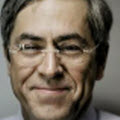 Prof. Arnold Munnich
Prof. Arnold Munnich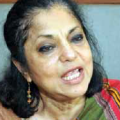 Professor Naila Zaman Khan
Professor Naila Zaman Khan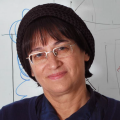 Professor Patrice (Tamar) Weiss
Professor Patrice (Tamar) Weiss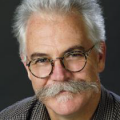 Professor Alan Mackay-Sim
Professor Alan Mackay-Sim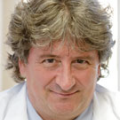 Professor Adré Jacques du Plessis
Professor Adré Jacques du Plessis